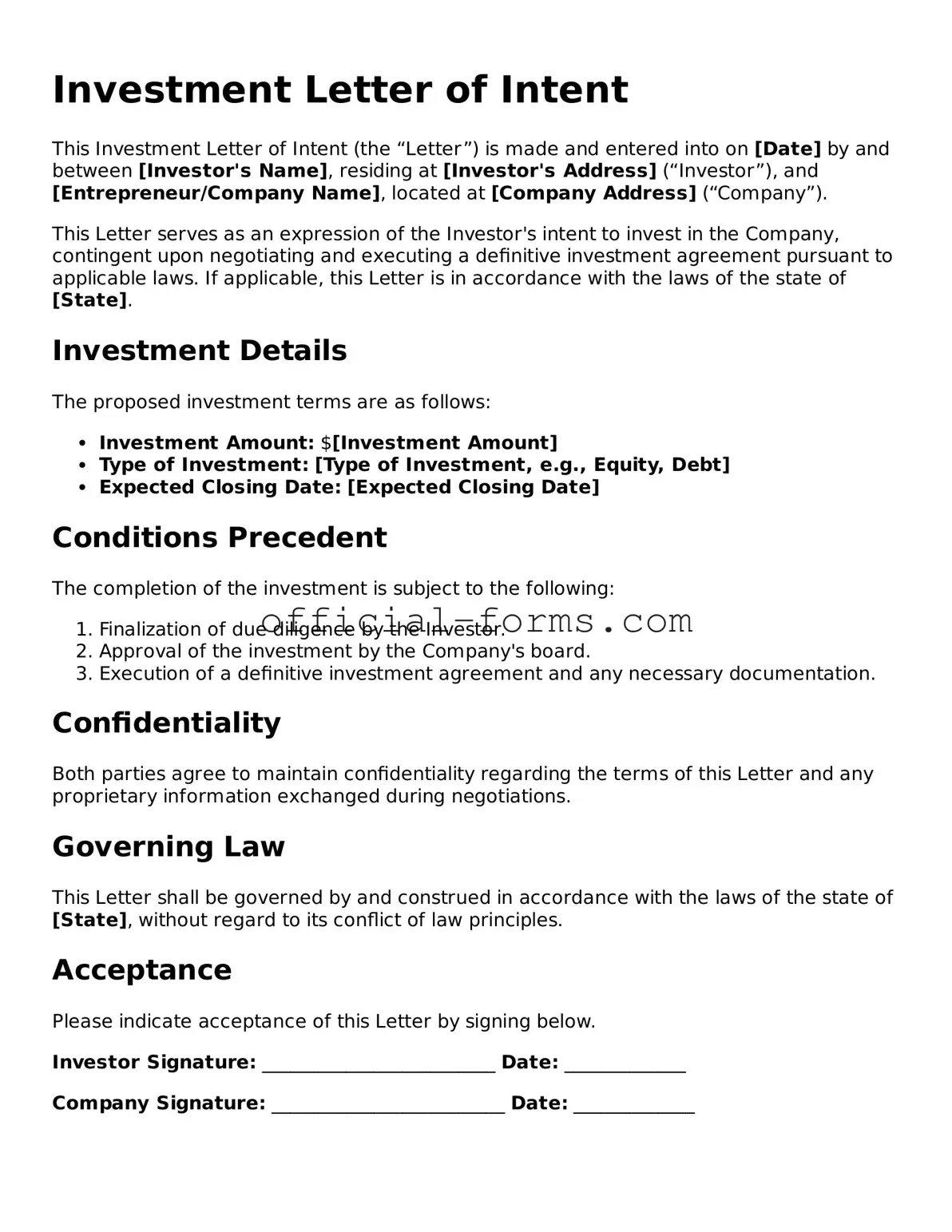Filling out an Investment Letter of Intent form can be a straightforward process, but many people make common mistakes that can lead to confusion or delays. One frequent error is not providing complete personal information. When individuals skip over sections or provide vague details, it can cause issues down the line. Always ensure that your name, address, and contact information are accurate and fully filled out.
Another mistake involves not clearly stating the investment amount. Some individuals may write down a range or an unclear figure. It’s essential to specify the exact amount you intend to invest. This clarity helps prevent misunderstandings and ensures that all parties are on the same page.
People often forget to review the terms and conditions. Ignoring this step can lead to unexpected obligations or misunderstandings later on. Take the time to read through the terms carefully, ensuring you understand what you are agreeing to before signing.
In addition, many individuals neglect to include the date on the form. While it may seem minor, failing to date the document can create complications. A dated form helps establish a timeline and can be important for legal purposes.
Another common issue is not providing the necessary supporting documents. Some may assume that the form is sufficient on its own. However, many organizations require additional information or documentation to process the investment. Check the requirements carefully to avoid delays.
People sometimes sign the form without reading it thoroughly. This can lead to agreeing to terms that are not fully understood. Always take a moment to review the entire document before adding your signature. It’s your investment, and you want to ensure you’re comfortable with all aspects.
Lastly, a common oversight is not keeping a copy of the completed form. After submission, having a copy for your records is vital. It allows you to reference the details later if needed. Always make sure to keep a copy for your personal files.
